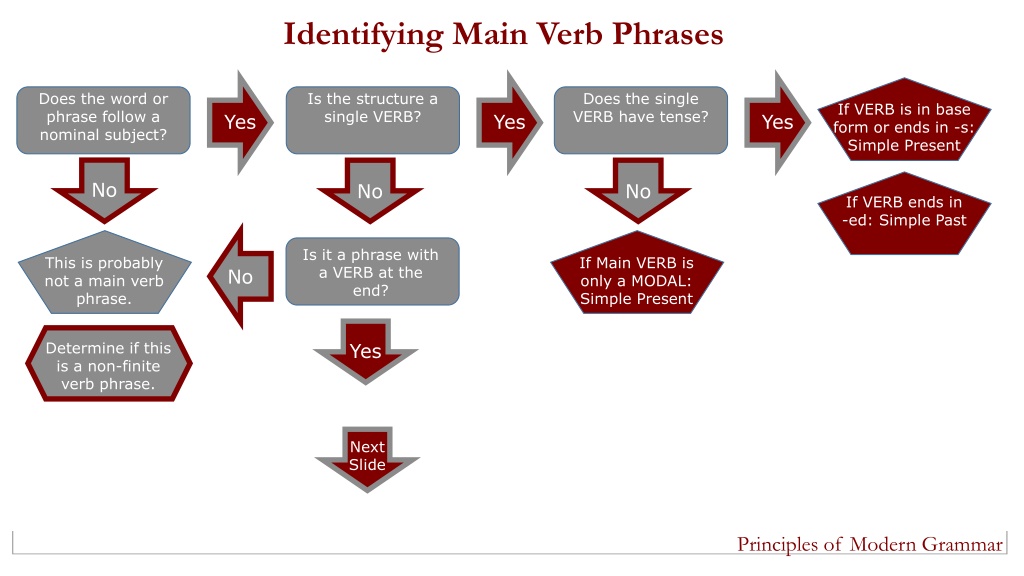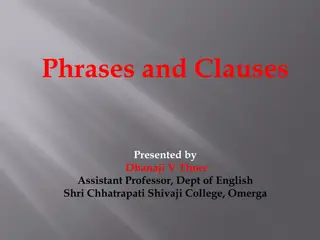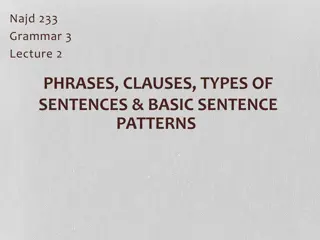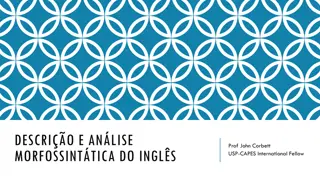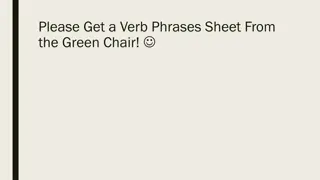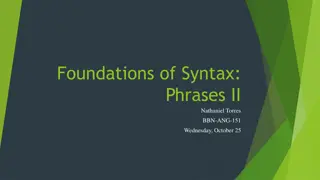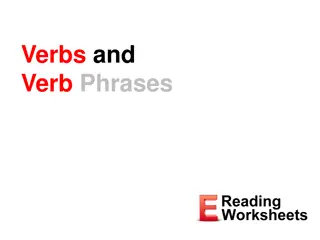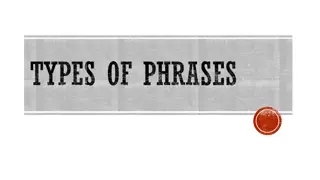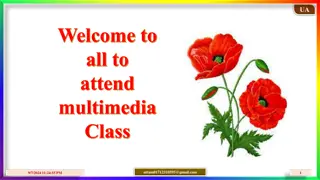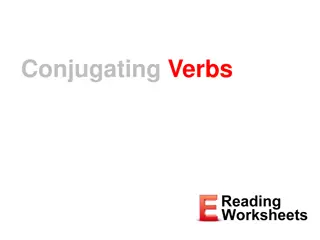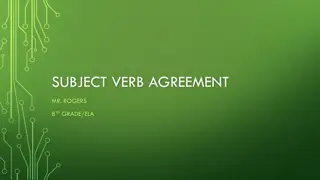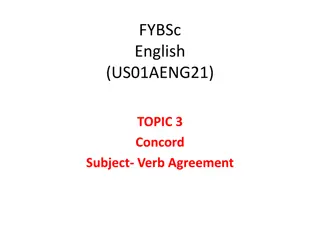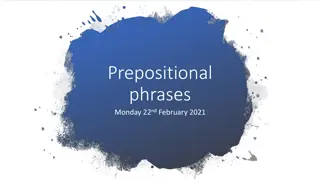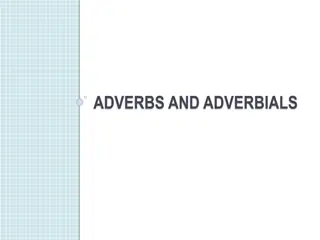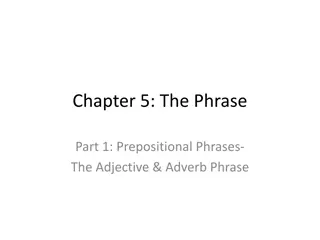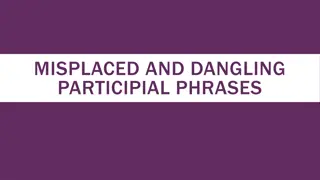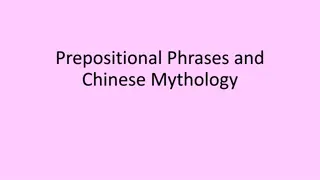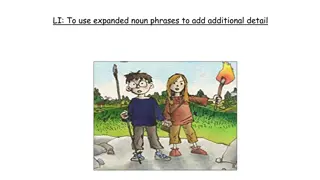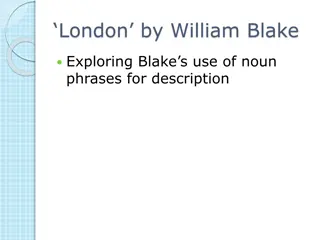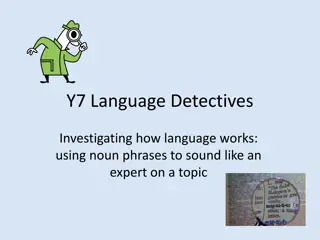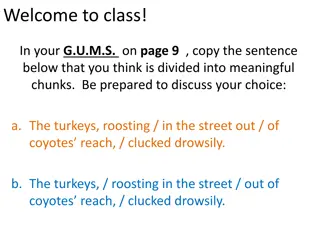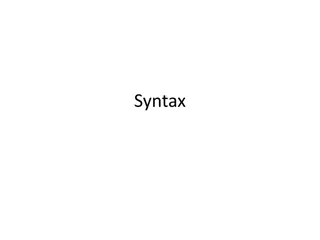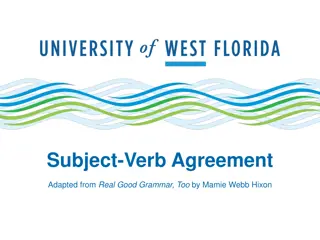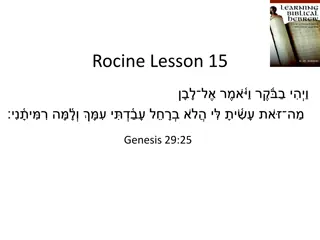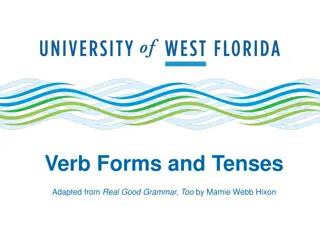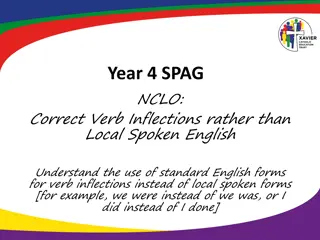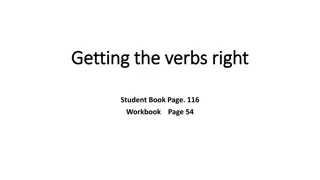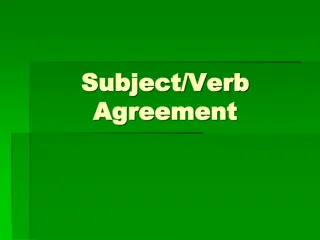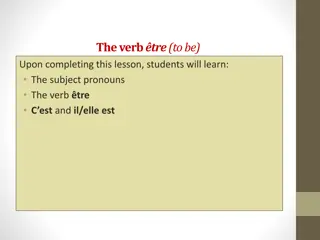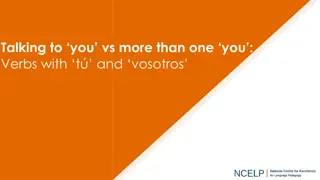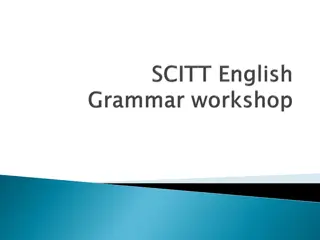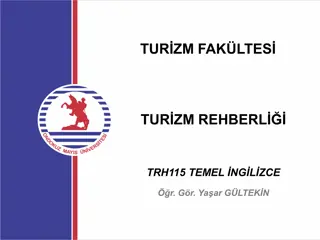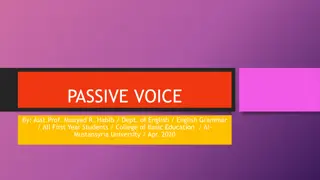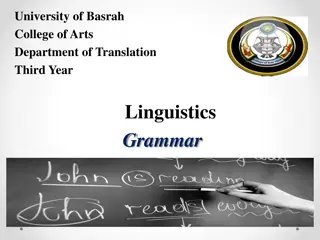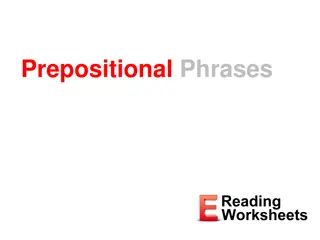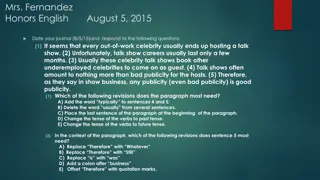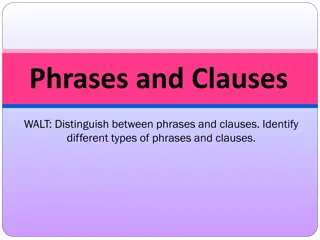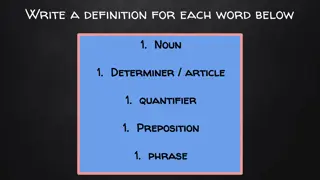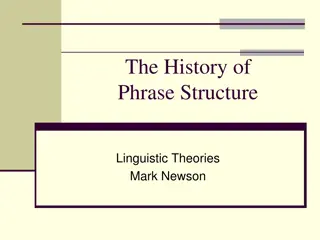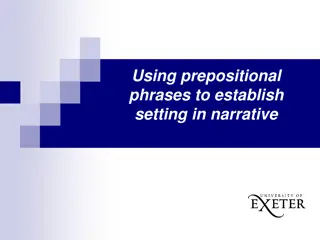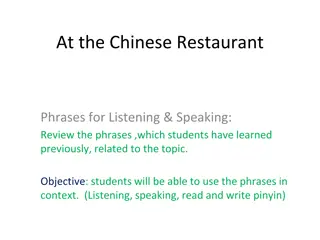Understanding Main Verb Phrases
This guide provides a detailed overview of identifying main verb phrases in sentences. It covers key aspects such as the structure, tense, presence of modals, auxiliaries, and exceptions to consider when determining the main verb in a sentence.
Download Presentation

Please find below an Image/Link to download the presentation.
The content on the website is provided AS IS for your information and personal use only. It may not be sold, licensed, or shared on other websites without obtaining consent from the author. Download presentation by click this link. If you encounter any issues during the download, it is possible that the publisher has removed the file from their server.
E N D
Presentation Transcript
Identifying Main Verb Phrases Does the word or phrase follow a nominal subject? Is the structure a single VERB? Does the single VERB have tense? If VERB is in base form or ends in -s: Simple Present Yes Yes Yes No No No If VERB ends in -ed: Simple Past Is it a phrase with a VERB at the end? This is probably not a main verb phrase. If Main VERB is only a MODAL: Simple Present No Determine if this is a non-finite verb phrase. Yes Next Slide Principles of Modern Grammar
Identifying Main Verb Phrases Does the phrase have a MODAL preceding the VERB? Next Slide No Yes Is the MODAL the only auxiliary preceding the VERB? Are the auxiliaries MODAL + HAVE only? Are the auxiliaries MODAL + HAVE + BE? No No Yes Yes Yes EXCEPTION: Main Verb has an -en or -ed ending The Main Verb should be in its base form. The Main Verb should have an -en or -ed ending. The Main Verb should have an -ing ending. BE + -en or BE + -ed is PASSIVE Simple Present Present Perfect Present Perfect Progressive Principles of Modern Grammar
Identifying Main Verb Phrases Is HAVE the only auxiliary preceding the VERB? Are the auxiliaries HAVE + BE? Next Slide No No Yes Yes The auxiliary is HAD BEEN The auxiliary is HAS or HAVE The auxiliary is HAS BEEN The auxiliary is HAD No No Yes Yes Yes Yes EXCEPTION: Main Verb has an -en or -ed ending The Main Verb should have an -ing ending. The Main Verb should have an -en or -ed ending. The Main Verb should have an -en or -ed ending. The Main Verb should have an -ing ending. BE + -en or BE + -ed is PASSIVE Past Perfect Progressive Present Perfect Past Perfect Present Perfect Progressive Principles of Modern Grammar
Identifying Main Verb Phrases MVP = TENSE + (MODAL) + (HAVE + [-en]) + (BE + [-ing]) + MAIN VERB BE is the only auxiliary preceding the VERB? Yes The auxiliary is IS or ARE The auxiliary is WAS or WERE No Yes Yes EXCEPTION: Main Verb has an -en or -ed ending The Main Verb should have an ing ending. The Main Verb should have an ing ending. DONE Present Progressive Past BE + -en or BE + -ed is PASSIVE Progressive Principles of Modern Grammar
